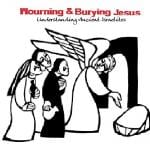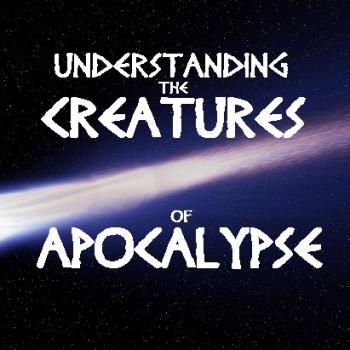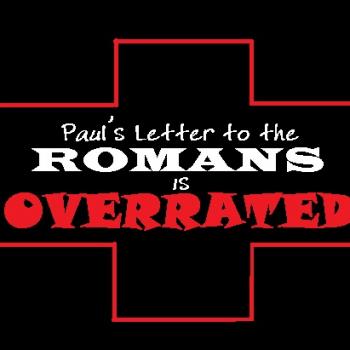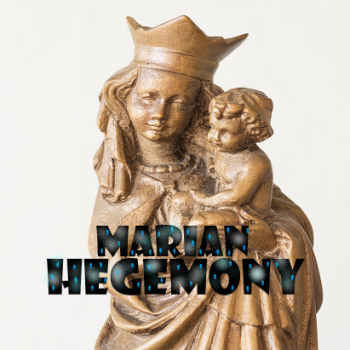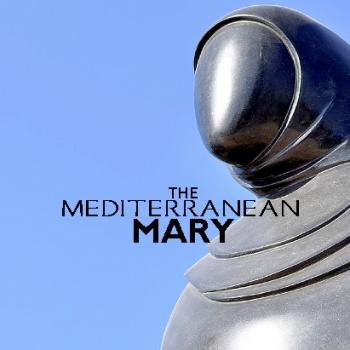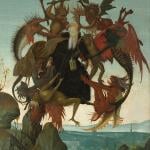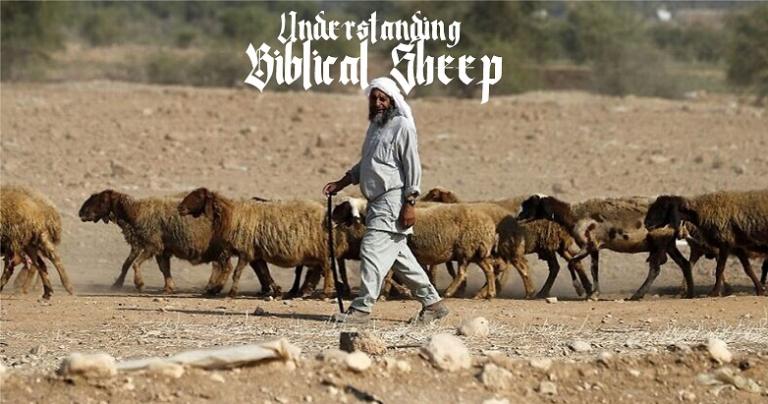
Sheep in the Gospels are the care of male shepherds, and are a most misunderstood animal by American Bible readers.
Sheep and shepherds feature prominently in this Sunday’s Scripture readings, especially the Gospel (John 10:1-10). Today we focus on sheep in the Gospels. Tomorrow, shepherds.
Cute. Cuddly. Fluffy. Weak. Stupid. That’s the best and worst we Americans can say about sheep. But these adjectives don’t apply to sheep in the Mediterranean world of the Bible. Every homily or sermon you’ve heard that uses these adjectives for sheep is therefore dead wrong and blocking understanding in an ethnocentric-to-the-West reading. True, in the Mediterranean world of the Bible as anywhere, sheep are sheep, and as such are sources of wool and food. But more importantly, sheep are culturally-specific symbols for Mediterranean masculinity.
The cultural world of Jesus and the Gospels is fiercely gender-divided. Men and honor are symbolized by sheep; women and shame are symbolized by goats. Consider the following graph—
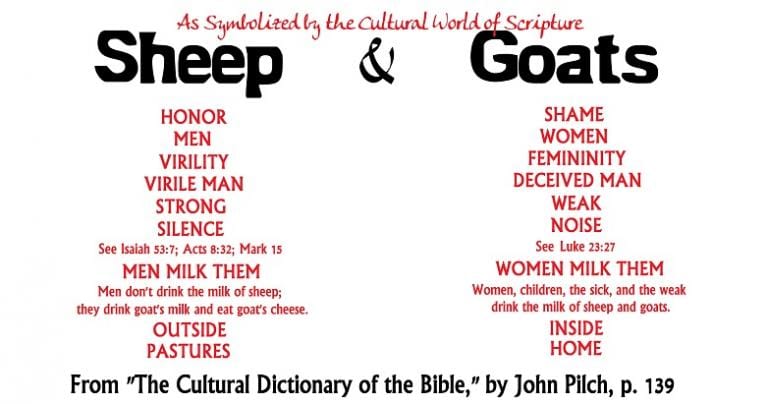
Sheep & the Good Shepherd
Sunday’s Gospel (John 10:1-10) concerns Jesus’ ministry. The Johannine Jesus uses the idea of raising sheep in first-century Herodian Palestine to draw parallels to himself and his work. The Sunday readings include the famous twenty-third Psalm as well—
Psalm 23
Yahweh is my shepherd;
there is nothing I lack.
In green pastures he makes me lie down;
to still waters he leads me;
he restores my soul.
He guides me along right paths
for the sake of his name.
Even though I walk through the valley of the shadow of death,
I will fear no evil, for you are with me;
your rod and your staff comfort me
You set a table before me
in front of my enemies;
You anoint my head with oil;
my cup overflows.
Indeed, goodness and mercy will pursue me
all the days of my life;
I will dwell in the house of Yahweh for endless days.
Here the Psalmist is compared to a sheep. In order to get the metaphor, what are we to imagine? Something cute, cuddly, and stupid? Or something else entirely?
The Meaning of Biblical Sheep
According to scholar John Pilch, sheep and goats were the earliest domesticated animals. They are common throughout the circum-Mediterranean world. Because sheep were such an important aspect of ancient Israelite life, both Hebrew and Aramaic have many words for sheep, even different terms specifying their sex and age.
Take the word rāhél, the Hebrew for ewe or adult female sheep (see Genesis 31:38; 32:14-15), from where the name Rachel is derived. And remember the endearing Aramaic term “Talitha” (Mark 5:41) Jesus uses for Jairus’ daughter? That word is based on the Aramaic noun for a newborn ewe lamb, talyāh.
Note that the word ‘ayil, Hebrew for “ram,” gets figuratively applied to great male leaders of Israel (Jeremiah 25:34; Ezekiel 17:13; 30:13; 31:11)—difficult to see in English, but not in Hebrew.
Understanding this assists American Bible readers. It helps us drop untenable associations we might place on sheep—cute, cuddly, fluffy, weak, and stupid—that are alien to Scripture. In other words, we can begin to read passages like John 10:1-10 and Psalm 23 (the responsorial for this Sunday) respectfully.
Both sheep and goats are mammals with cloven hoofs that chew cud. Because of this, Israelite tradition saw them as non-polluting animals (Leviticus 11:1-8). Thus, both sheep and goat flesh, plus milk and cheese from either animal, could be eaten. However goats were considered a symbol of dishonor, of shame.
Sheep and Goats, Honor and Shame
Context scholars like Pilch are emphatic: you will never understand the Bible without grasping the cultural values of honor and shame. As we have explained repeatedly on this blog, honor means a public claim to worth together with the essential public acknowledgment of that claim. Therefore, all ancient Mediterranean men, Israelites included, could not escape their duty at asserting, defending, and whenever possible augmenting his family’s honor.
And what point of the household did ancient Mediterraneans deem the most vulnerable for assaulting or stealing family honor? Unquestionably it was the women (Sirach 26:10-12). Consequently, biblical women (i.e., Mediterranean women) could not escape their association with shame.
But shame in the cultural world of Scripture is seen in two ways, positive and negative. Therefore biblical women be related to shame both positively and negatively. Positively, the biblical woman had to cultivate a sense of shame, meaning she had to be sensitive to the honor of her family. But negatively, a biblical woman became the source of her family’s shame when she was violated—that such violence would happen against her will made no difference in the public eye.
The whole of our Mediterranean library called “Bible” is permeated by honor and shame. These values soak into everything, including sheep and goats. Sheep are cared for by men outside; goats are mainly looked after by women inside the home. Biblical sheep symbolize honor and biblical goats mean shame. These animals represent internal differentiation in Biblical society.
Messy Inspiration & Macho Sheep
Our twenty-seven New Testament documents were all written by inspired Mediterranean men. Inspiration happens in. Into what? Into culture. Inspiration is messy, American Christians!
New Testament males, like all Israelite males, were deeply impressed by how sheep suffered and died. This was because sheep suffered and died silently, without complaining, unlike noisy goats. It was therefore easy for New Testament authors to compare heroic men to sheep because to suffer in silence, they considered, to be the sign of a real man.
Hadn’t Deutero-Isaiah described Israel, the Faithful Servant “like a lamb led to slaughter or a sheep silent before shearers, he did not open his mouth” (Isaiah 53:7)? It was easy then for Philip, Israelite and Mediterranean male that he was (or “Luke” who was the same), to apply the Isaian passage to Jesus (Acts 8:32-35). Look how “Mark” portrays Jesus’ death in 15:25-37—it’s the same sheep death! And this was all possible because sheep to Mediterranean culture symbolized honor, virility, and strength.
Raising Boys Into Rams
Imagine prepubescent Mediterranean boys, including Middle Eastern males of that age range, doted on by village women throughout their earliest years. The biblical male starts off in a paradise raised exclusively by the women without any adequate male role model in early childhood—postpubescent males eat and sleep separately in the home and they spend most of their time away. The young boys are breastfed even after they can speak and say, “Milk!” When upset, they are calmed in every way, even fondled in ways shocking to mainstream Americans!
Imagine the earth-shattering cataclysm that hits the biblical male with puberty, when he is dragged unceremoniously into the harsh world of Mediterranean men. Eden is forever closed, off-limits. Now he must start over and learn how to be a man. But because of his childhood, gender ambiguity haunts him until the grave. What does it mean to be a man?
The sheep offers a cultural example, a model of Mediterranean manliness. Therefore, as sheep do, males learn to suffer silently, endure hardship and agonizing pain without complaining. Whip my back until it drips with blood, then I will turn over silently and offer you my frontside. I will take anything you give me and not flinch. For the honor of my family, my fathers, my God. The sheep offered a perfect heroic image of Jesus for Paul, the author and astral prophet of Revelation, and “John.”
Shameful Goats
Although goats were recognized as non-polluting animals by Israelites, they were nevertheless symbols of shame. Mediterraneans tend to see goats as lascivious beasts, allowing sexual hospitality with their females to other he-goats. So even if two he-goats sparred over a female, the winner would cover her first, and then step aside for the loser have a go. In contrast, male sheep would die in battle before allowing this. But for goats this behavior is common. More than two male goats service the flock, whereas one ram mates with fifty ewes while preventing any sexual access to any other males. It follows that goats would be seen as symbols of shame by Mediterranean consensus reality.
Mediterraneans project these goat-attributes onto cuckolds or deceived husbands, males who allow other males to commit adultery with their wives. Even today throughout the Mediterranean culture continent, goats are associated with shamed men. Portuguese males throw goat parts onto the roofs of males being cheated on. And Latino males employ the insult cabrón—literally male goat—to other males for a variety of colorful reasons, but the original Spaniard sense was cuckold.
Tomorrow we will talk about shepherds and Jesus, the noble shepherd.


